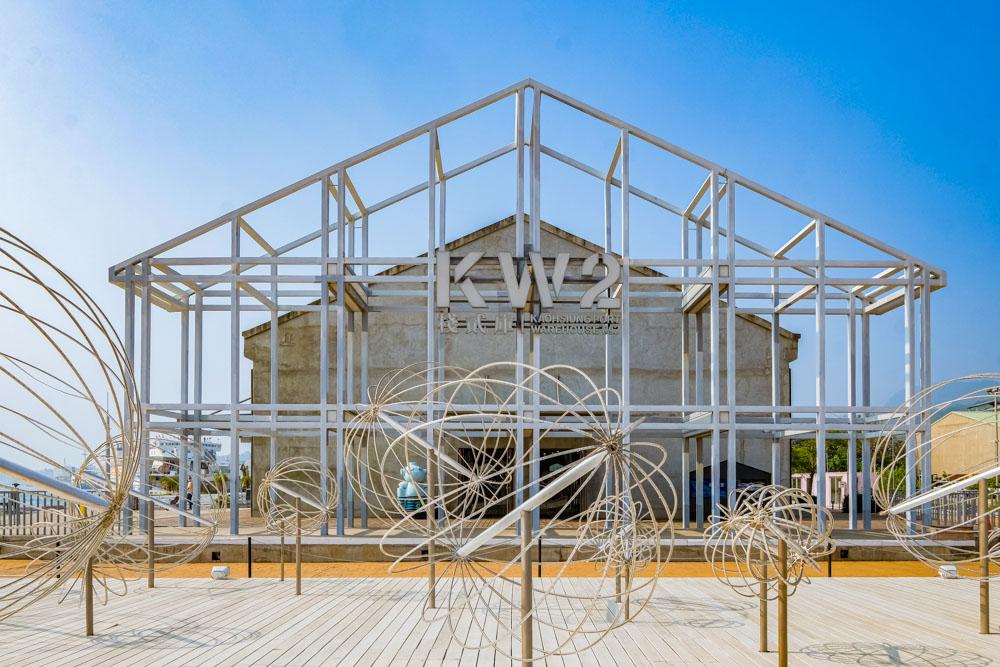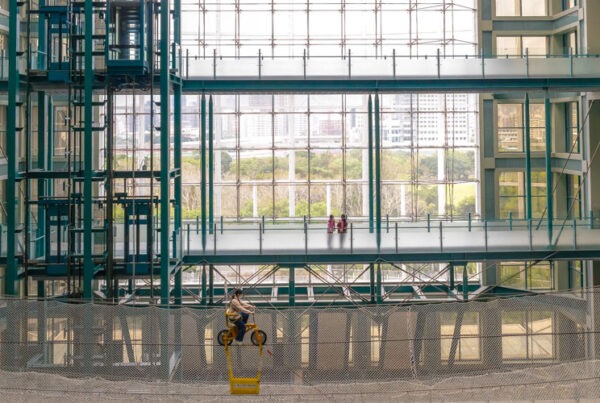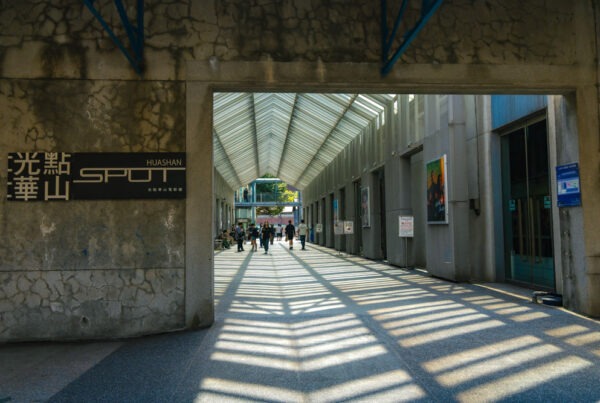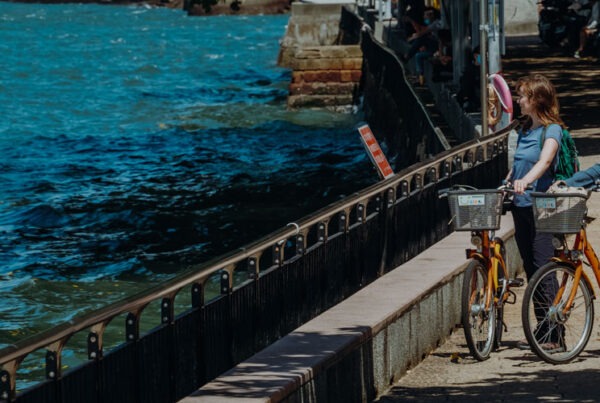The Renascent Heart of Kaohsiung City’s History
TEXT / RICK CHARETTE
PHOTOS / VISION
The smallest of Kaohsiung’s urban-core districts, old Yancheng is located on the north side where the Love River flows into the Port of Kaohsiung. After a long period of decline, the past few decades have brought a magical renaissance and compact, flat, comfortably walkable Yancheng has become perhaps the city’s most powerful tourist magnet.
Morning
First, some very valuable historical nuggets for you to chew on for breakfast before we strike out on a morning walkabout:
Yancheng District is so level and easy to navigate on foot because in the imperial era Han Chinese drained the marshy expanse here to create salt fields. “Yancheng” is, literally, “salt fields.” In the 1895-1945 Japanese colonial era it was transformed into the city’s first sakariba, or bustling commercial/entertainment zone. Post-WWII the district became an emporium for the sale of restricted imported goods and a gateway for American cultural influences.
Next, a precious modern-history tidbit: The inexpensive and efficient Kaohsiung Light Rail and Kaohsiung Metro Orange lines provide convenient access to Yancheng.
And now, onward ho!
Take the most edifying of walks through Kaohsiung’s development at the Kaohsiung Museum of History (khm.org.tw) its home a stately edifice dating from the Japanese era that served as the Kaohsiung Municipal Hall during that era and later as Kaohsiung City Hall. A sleek new building addition shaped like an arched glass greenhouse houses Takao Eat (www.facebook.com/takaoeat) a multifunction space for food dining, reading, exhibits, and classes.




↓
[Distance 700m; 10-min walk]
↓
Yancheng First Public Retail Market is a traditional market, once Kaohsiung’s busiest, that was established in 1949 and refurbished with a hipper new look designed to attract a younger crowd in 2022. Within its alleyway labyrinth, old stands and shops have been given aesthetic makeovers, and nattier enterprises such as a café and beer-on-tap kiosk opened. The last is in the market’s heart, the high-ceilinged middle hall, sporting numerous skylights in its new gabled wood-plank roof with exposed wood trusses.



↓
[Distance 550m; 8-min walk]
↓
The architectural work for today’s Alien Art Centre (alien.com.tw) dedicated to the display of contemporary art, was originally a military hostel, built in 1967 to handle navy/army personnel transitioning to and from Taiwan’s Kinmen and Matsu archipelagoes. The art museum, opened in 2018, also has a special display on the unusual history of the premises, with period photos, military vets’ oral histories, etc.


Noon/Early Afternoon
As noon approaches your tummy will no doubt let you know that attractions where sapid food creations are available should be on the horizon. Your Travel in Taiwan itinerary planners have obliged.
↓
[Distance 700m; 10-min walk]
↓
The historic Hamasen area in Gushan District, which adjoins Yancheng’s southwest corner, is today home to the Hamasen Railway Cultural Park. This broad space was originally open water; Hamasen’s flat expanse was created when the Japanese undertook a combined harbor dredging/land reclamation project, completed in 1905.


The key features in today’s park are a railway museum, platform area and 38 sets of rail tracks, open-air displays of locomotives, carriages, and other rolling stock, and mini-train rides. The Japanese built a railway system along Taiwan’s west side, ending in the south right at this spot. The Takao Railway Museum building was originally Kaohsiung’s port station and the south’s first railway station. Targeted by Allied bombers in WWII, it was rebuilt but, in more recent times, was shut down following port expansion further away and movement of rail transport away from the old city core. Inside the museum are Taiwan railway-history exhibit rooms, model trains and railways, and a railway-document archive.


↓
[Distance 550m; 8-min walk]
↓
The Kaohsiung Port Warehouse No. 2 (www.kw2.com.tw; Chinese), immediately south of the park looking out at the harbor’s ship-, ferry-, and tour yacht-busy north end, was reopened for its new tourism mission in 2018. You’ll browse iconic Taiwan food-brand and cultural-creative outlets on the first floor, artist-exhibit spaces on the second. The original warehouse here, built in 1914, was severely damaged in WWII Allied bombing and thereafter reconstructed with concrete support pillars and rebar. Informally called the “Banana Warehouse,” it was used for banana and sugar export storage.


Chao Da Food (www.chaoda.com.tw; Chinese) is a cherished Kaohsiung chain crafting flavorsome Taiwan traditional-style jerky and dried fruits, agri-produce sourced all from the Kaohsiung region. Established in a small shop by a husband-wife team about four decades back on the city’s famed Sanfong Central Street, a narrow century-old covered market street that is Kaohsiung’s largest grocery goods wholesale center, it’s now second-generation-run. Must-buys include the honey-glaze pork jerky, pepper pork jerky, dried mango, and dried pineapple.

↓
[Distance 550m; 8-min walk]
↓
The wonder-filled enclavethat is The Pier-2 Art Center (pier2.org) just northeast of Warehouse No. 2 looking into the waters of one of the port’s manmade berthing inlets, was the explosion point for Kaohsiung’s recent-decades cultural-creative bloom. The first of its three revivified warehouse clusters was transfigured in the 2000s. The original mission of these long-abandoned structures was storage of resources such as granulated sugar and fish meal. Today they’re cultural-creative incubators, stages for domestic and international exhibitions and festivals, live indoor and outdoor musical, theatrical, and busker performances, and quirky large-scale outdoor installation artworks and 3D/graffiti-style murals, some created by artists-in-residence. There are also many cultural-creative merchandise shops, cafés/eateries, and other entrepreneurial ventures.

You’ll find a hunger-quenching SunnyHills (www.sunnyhills.com.tw; Chinese) chain outlet in warehouse C11. Designed with a bar-style look, there is a long bar-type service counter across one end and lines of tables before it. SunnyHills’ signature treat is pineapple cakes using 100% indigenous Taiwan pineapples grown in central Taiwan’s Mt. Bagua area. Visitors sit down here to free product samples and tea.


TOOLS to LIVEBY (toolstoliveby.com.tw), in C6, is a lifestyle store bringing enlightened aesthetics to life’s small practical items, importing classic-brand stationeries from Europe, the US, and Japan and offering own-design novelties such as calligraphy practice notebooks, scissor pins, ceramic pins, and typographic postcards.


Late Afternoon/Evening
As the sun lowers and then disappears in the western sky, the best places to be are by the reflective waters of the harbor area and connecting Love River, where an air of breezy romance rises.
↓
[Distance 450m; 6-min walk]
↓
The Great Harbor Bridge jumps the aforementioned berthing inlet before The Pier-2 Art Center, landing on its souhwest side at the young Kaohsiung Port Depot 410 complex, four warehouses stuffed with food and shopping ventures. The arched, sleek-lined, pure-white 110m pedestrian passageway is Taiwan’s first horizontally rotating landscape bridge, and Asia’s longest cross-port rotating bridge (3min tourist-display rotations 3pm daily, 7pm Fri/Sat/Sun). Its dynamically contoured profile is in the image of a dolphin and seashell, odes to the Kaohsiung region’s marine culture. The Kaohsiung Light Rail’s Dayi Pier-2 Station is right off the east end, making public-transport travel a breeze, and large Taiwan coast guard ships berth here in a line with the city’s skyscrapered skyline as backdrop, making for quintessential Kaohsiung-theme photo captures.



↓
[Distance 600m; 8-min walk]
↓
The Kaohsiung Music Center (kpmc.com.tw) a monumental young architectural artwork on the north side of the Love River’s mouth, is an incubator for south Taiwan pop-music talent. The bold-design look of the main building is integrated with the surrounding harbor scenery. Honoring the importance of the marine environment for Kaohsiung, its bright-white exterior features towers that resemble crashing sea waves and honeycomb-look facing that symbolizes coral-reef communities. Also part of the complex is the Dolphin Walk, structured to resemble a leaping dolphin, which delivers visitors over the Love River mouth to other KMC facilities on the south side. One of the Kaohsiung Light Rail’s charming bus-stop-style stations is right along the raised pathway. On the south side is the Coral Zone, with roof looking like coral as seen from the Dolphin Walk, used for exhibits and cultural-creative retail.

↓
[Distance 850m; 12-min walk]
↓
A Love River cruise is a de rigueur Kaohsiung experience for visitors to the city. Rides on quiet electric-powered, open-sided Love Boats and on gondolas are offered. Two launch points are located just upriver and downriver from Zhongzheng Bridge, on the left bank. Commentary in Chinese is provided, and the gondoliers periodically break out in song. The experience is soothingly peaceful, especially in the evenings, with the riverside promenade and bridge lighting reflected on the water and the music of leisure establishments wafting through the air. Outings are provided weekdays 6pm~10pm and weekends/holidays 3pm~10pm. Check details in person at the ticket booths beside the cruise-launch locations, or with the city’s Tourism Bureau (khh.travel).

↓
[Distance 750m; 10-min walk]
↓
One of the abovementioned music-playing leisure establishments, popular Love River Beer Garden is on the right bank downriver from Zhongzheng Bridge. Its forecourt is lined with long beer hall-style tables. Forming a backdrop semi-circle are two service kiosks – cargo containers with faux Bavarian chalet-style façades – and a metal-frame sculpture in the shape of a giant beer keg, lit up with string lights. On the libations side of the menu are German Erdinger and Hofbräuhaus beers, Buckskin (Taiwan) beers, cocktails, soft drinks, and hot drinks (coffee and various teas). On the munchies side are German-style pork knuckle, BBQ German sausage, chicken wings, diverse skewers, etc. (assorted platters available).


Further Exploration
Looking down over Kaohsiung Port’s narrow north mouth is the 1879-built The British Consulate at Takow, Britain’s first consulate constructed in Taiwan. Just north of the mouth is Sizihwan Beach, sporting soft sand, swimming, and tourist-drawing sunsets into a horizon of moored ships and fishing craft. Just inland from here is the south tip of low, trail-webbed Shoushan (Longevity Mountain), atop which the Shoushan LOVE Lookout is perched. Long, thin, silt-created Qijin Island, reached by regular ferry, forms the Kaohsiung port’s outer side. Among its varied tourist draws are inexpensive seafood, breezy rental-bike/e-scooter rides, and the Kaohsiung Lighthouse, standing watch on the high port-mouth headland looking directly across at the British Consulate.



About the author

Rick Charette
A Canadian, Rick has been resident in Taiwan almost continually since 1988. His book, article, and other writings, on Asian and North American destinations and subjects—encompassing travel, culture, history, business/economics—have been published widely overseas and in Taiwan. He has worked with National Geographic, Michelin, APA Insight Guides, and other Western groups internationally, and with many local publishers and central/city/county government bodies in Taiwan. Rick also handles a wide range of editorial and translation (from Mandarin Chinese) projects.












